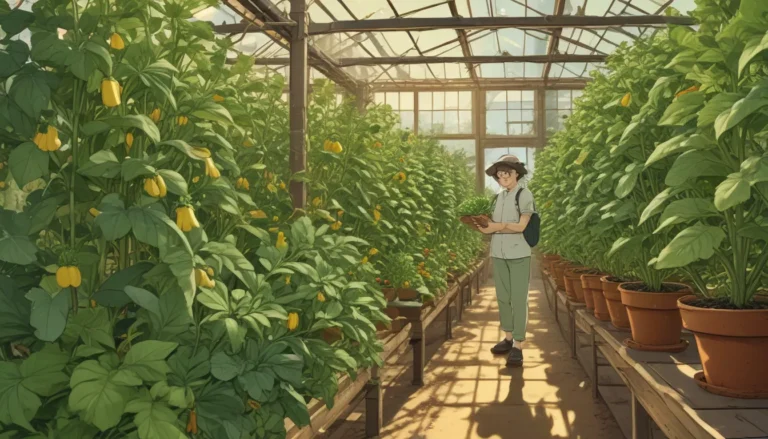Comprehensive Guide to Growing and Caring for Banana Plants

Are you curious about growing your own bananas at home? Certainly, bananas are a staple fruit loved across the world. But did you know that you can actually grow these delicious fruits in your own backyard or even inside your home? In this comprehensive guide, we will delve into the fascinating world of banana plants, covering everything from cultivation and history to propagation and pest management. Let’s plant some bananas!
What Are Banana Plants?
Banana plants belong to the genera Musa and Ensete. Musa species include the popular Musa acuminata and M. balbisiana, among others. The former produces the yellow, edible fruits we commonly consume, such as the Cavendish variety. On the other hand, plantains are derived from Musa balbisiana.
Ensete is another genus with diverse species, often used for ornamental purposes in botanical gardens. Both genera exhibit large, oblong leaves that fan out from a central pseudostem, eventually producing the iconic banana fruits.
Interestingly, banana plants are herbaceous and lack woody growth, despite reaching impressive heights. In fact, they are among the largest herbaceous plants globally. These versatile plants are crucial food crops worldwide, with different species and cultivars catering to various culinary and ornamental preferences.
Cultivation and History
The center of banana plant diversity lies in Southeast Asia. Over centuries, bananas have spread beyond their native regions, becoming common in tropical zones globally. Plantains were likely introduced to South America around 200 BCE, facilitated by extensive oceanic trade routes.
Since the 1600s, commercial cultivation of bananas has flourished, particularly in South America. The journey to today’s popular cultivars was marked by setbacks, such as the near extinction of the ‘Gros Michel’ type due to fusarium wilt in the 1950s.
The resilient Cavendish bananas emerged as a worthy successor, dominating the commercial market. Today, a wide array of species and cultivars offer diverse choices for consumers and home gardeners alike.
Propagation
Banana plants can be propagated through seeds, rhizomes, or pups. Each method has its nuances, but all are viable options for cultivating these beloved fruits.
- From Seed: Soak seeds in warm water before planting in moist soil. Germination occurs best in warm, tropical conditions.
- From Rhizomes: Plant underground rhizomes in rich, well-draining soil. Keep them warm and watered for optimal growth.
- From a Pup or Sucker: Transplant a mature offshoot once it’s a third of the main stem’s height. Ensure proper root development upon separation.
Propagation methods vary by species and cultivar, but generally require warm temperatures, adequate moisture, and well-draining soil for successful growth.
How to Grow Banana Plants
Banana plants thrive in warm, humid conditions with ample sunlight. Outdoor cultivation in frost-free zones is feasible, preferably in fertile, moist soil sheltered from wind. Consider the following tips for optimal growth:
- Plant in rich, well-draining soils: Incorporate compost during planting for nutrient-rich soil.
- Provide adequate space for growth: Outdoor bananas may spread up to 8 feet, while dwarf varieties are suitable for indoor or patio pots.
- Select a location with vibrant, indirect light: Bananas require sunlight for proper growth and fruit development.
- Maintain consistent watering: Keep soil moist but not waterlogged, adjusting frequency based on regional climate.
Proper care ensures healthy, vigorous banana plants capable of bearing flavorful fruits within a relatively short timeline. Whether indoors or outdoors, these plants demand attention to light, temperature, and water requirements for successful cultivation.
Pruning and Maintenance
Banana plants, as herbaceous perennials, exhibit rapid growth cycles, typically fruiting within 12-18 months under ideal conditions. Routine maintenance, including proper watering, feeding, and removal of dead leaves or offshoots, supports plant health and productivity.
- Remove suckers or pups: Prevent overcrowding and nutrient competition by pruning or relocating offshoots.
- Fertilize monthly: Apply a balance fertilizer or compost tea during the growing season to support plant growth and vigor.
- Address pest or disease issues promptly: Perform regular health checks to detect and manage common pests and diseases affecting bananas.
By adhering to a maintenance routine, banana growers can prolong the life and productivity of plants, maximizing fruit yields and ornamental appeal throughout the seasons.
Banana Species and Cultivars to Select
- Blue Java: ‘Blue Java’ is a hybrid variety with blue fruits before ripening to a sweet, gooey yellow. Suitable for USDA Zones 8-11.
- Dwarf Cavendish: A compact version of the popular Cavendish cultivar, ideal for indoor or outdoor cultivation in USDA Zones 9-11.
- Ethiopian: With striking red-ribbed leaves, the Ethiopian banana species thrives in USDA Zones 10-11 for ornamental or fruitless growth.
- Hardy Banana: M. basjoo, a cold-hardy option for USDA Zones 5 and above, features giant leaves and small, inedible fruits.
- Zebrina: M. acuminata ‘Zebrina’ exhibits dark green leaves with red spots, suitable for indoor or greenhouse cultivation in USDA Zones 9-11.
Select species and cultivars based on climate, space, and aesthetic preferences, ensuring optimal growth and fruiting potential for home cultivation.
Managing Pests and Disease
Banana plants are susceptible to various pests and diseases, necessitating proactive monitoring and management practices. Common pests like banana aphids, borers, scale insects, nematodes, and weevils pose threats to plant health and yield.
- Banana Aphid: Control with ladybugs or water sprays. Monitor undersides of leaves for infestation signs.
- Banana Borer: Prevent rhizome damage through routine inspections and plant health checks. Destroy adults and minimize infestation risk.
- Coconut Scale: Cleanse plants with soapy water or neem oil to deter coconut scale infestation.
- Sugar Cane Weevil: Safeguard against larval damage by identifying and eradicating adults promptly.
- Burrowing Nematode: Minimize soilborne nematode damage through regulated plant material movement and inspection.
Preventative measures, including planting disease-resistant varieties, maintaining plant health, and early pest detection, are essential for a thriving banana garden.
Harvesting and Preserving
Harvest ripe bananas when color and firmness indicate readiness for consumption. While refrigeration or freezing alters texture, dehydrating slices allows for extended preservation and diverse culinary applications.
- Harvest: Pick fruits when ripe for immediate consumption or refrigeration. Use a sharp, sterilized knife to detach bunches from the plant.
- Preserve: Dehydrate or freeze ripe bananas for extended storage and future use in recipes or baked goods.
Preserving harvested bananas, whether through dehydrating or freezing methods, extends shelf life and culinary versatility for home gardeners.
Recipes and Cooking Ideas
Bananas are versatile fruits suited for both sweet and savory culinary creations. Experiment with classic desserts, smoothies, or savory dishes incorporating cooked banana for a unique twist on traditional recipes.
- Trifle: Indulge in a layered trifle featuring ripe bananas, whipped cream, and other sweet delights for a decadent treat.
- Curry: Explore Thai or Indian-inspired curries with cooked banana and aromatic spices for a flavorful, exotic dish.
- Dehydrated Chips: Create dehydrated banana chips for a wholesome, on-the-go snack or recipe garnish.
Embrace the tropical flavors of bananas in homemade dishes, snacks, and drinks, elevating traditional recipes with a touch of sweetness and vibrant color.
Conclusion
Delve into the fascinating world of banana plants through cultivation, propagation, and pest management insights in this comprehensive guide. Explore a diverse selection of species and cultivars suited for outdoor or indoor growth, incorporating decorative or edible varieties based on individual preferences.
From bananas to blue Java, each cultivar offers unique flavors, ornamental allure, or cold hardiness for diverse growing environments. Harness the information provided to cultivate healthy, productive banana plants at home, enjoying a harvest of luscious fruits and tropical beauty throughout the seasons. Share your banana growing tips, favorite cultivars, or recipe recommendations to enrich the banana enthusiast community!
By integrating detailed growing instructions, pest management tips, and culinary inspiration, this article provides valuable insights and practical guidance for banana plant enthusiasts. The conversational tone, bulleted lists, and italicized terms enhance readability and engagement, catering to a broad audience interested in banana cultivation and care.Imagery of wholesome banana recipes and vibrant plant varieties further enrich the content, stimulating reader interest and participation in the exciting world of banana cultivation.





